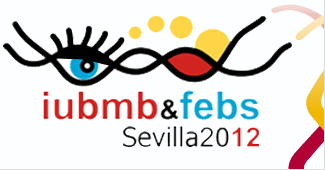The history of Seville is that of a melting pot of cultures, with a fertile balance of arts, sciences and commerce. Legend has it that the city was founded by Hercules, and from its foundation onwards, three thousand years of history have left a spirit of tolerance and a rich legacy from cultures as diverse as Phoenician, Roman, Muslim, Jewish and Christian.
The Romans initially came to Spain to fight Hannibal's Carthaginian armies but ended up staying for over six centuries. The period of Roman dominance left not only a language, but also numerous architectural remains. The town of Italica, built as a home for battle-weary troops, houses a Roman theatre so well preserved that it is still used for performances. It was also the town where two great emperors were born: Trajan and Adrian.

By the end of the fifth century AD, Spain had been overrun by barbarians, but it was not long before they too succumbed to Andalusia's civilizing influence, and Seville became an important city in the Visigoth Kingdom. However, in 712 Seville was suddenly engulfed in the northward push of Muslim armies. The Moorish occupation was to last for over five centuries, a period that saw the largely peaceful coexistence of Muslims, Jews and Christians.
Islam has left many indelible marks in the city: the winding alleys of the city center, the cool courtyards of the numerous mansions and the tranquil fountains of the Santa Cruz quarter. Another excellent example of the Muslim heritage is the Alcazar, a fabulous palace and gardens, in the city center, similar to the Alhambra in Granada.
All the defences built by the Muslims could not stem the reconquest that began in the north of Spain: in 1248 the city fell to the Christian armies of King Ferdinand III. Now the city's patron saint (San Fernando), he maintained a policy of religious tolerance, dividing the city into zones for each of the three faiths. Inspired by faith the Christians built many impressive buildings: the City Hall, numerous churches and palaces and, of course, the magnificent Cathedral.
Christopher Columbus planned his expeditions in the Monastery of Santa Maria de las Cuevas, in the Isla de la Cartuja, now restored to be a Modern Art museum. Trade with the New World made Seville the richest city in Europe. However, the monopoly of trade was lost in the eighteenth century and with it the wealth, which had created scores of magnificent churches and had supported painters like Velázquez, Murillo and Zurbarán, as well as many other artists.
With the loss of the American colonies, the nineteenth century was a time of decline for Spain. Nevertheless, it was precisely this mixture of orange blossom and decay that so enticed the romantics of northern Europe. They came south looking for mystique and innocence that had been smudged out by the smoke of industrial revolution, and Seville came to represent a key venue in the Grand Tour itinerary.

Lord Byron wrote of his admiration for the city's dark-eyed damsels, some of who feature in his reworking of the traditional story of "Don Juan Tenorio".
Mozart's "Don Giovanni" is drawn from the same local legend, and his "Les Nozzes di Figaro" is also set in Seville. With Rossini's "Il Barbiere di Siviglia", Verdi's "La Forza del Destino", Beethoven's "Fidelio" and over twenty other works all based in the city, Seville can consider itself to be the opera capital of the world. This claim has recently been enhanced by the construction of a fabulous new opera house, the Maestranza, which frequently hosts productions from leading international companies.
Across the river from the opera house lies the old sailors' quarter of Triana, with the beautiful Betis Street, and it was there that the gypsy chants of a girl inspired the young French writer Prosper Merimée during his stay in the 1840's. After him, Bizet, with an adaptation of the work “Carmen”, created one of the most beautiful operas ever written.

